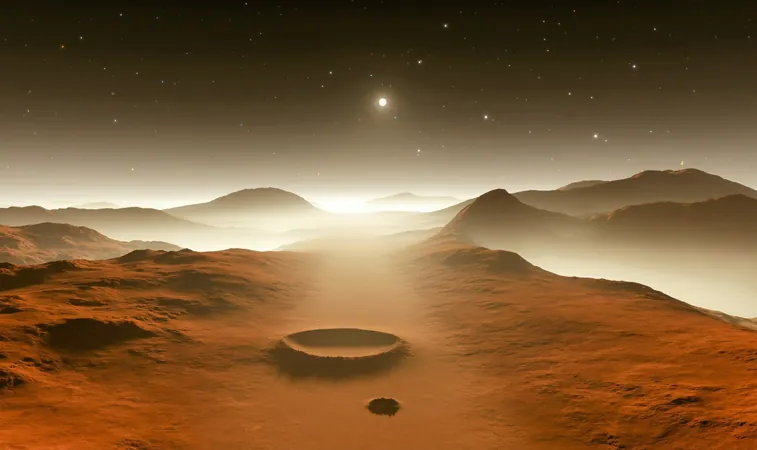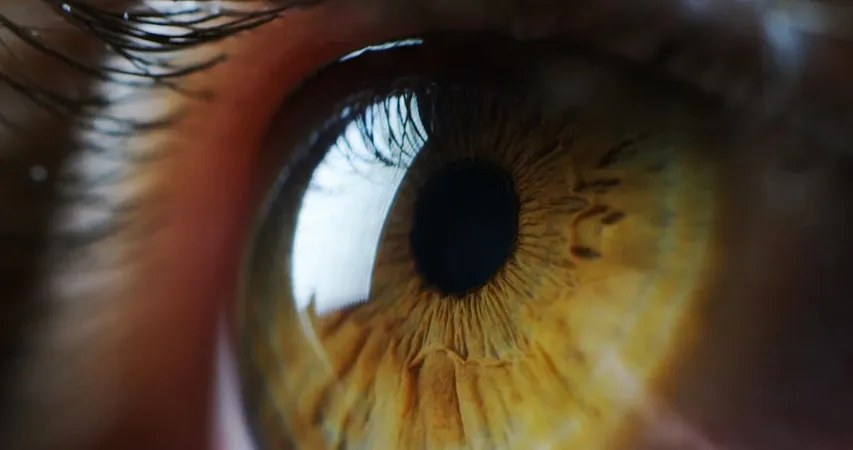
The Hidden Dangers of Martian Dust: Could it Endanger Future Astronauts?
2025-04-02
Author: Wei Ling
As humanity sets its sights on colonizing Mars, the cosmos may not be the only thing to worry about. Surprisingly, one of the most significant risks for astronauts could come from an unlikely source: Martian dust.
A groundbreaking study from the University of Colorado Boulder has unveiled alarming health risks associated with prolonged exposure to the fine particles found on the Red Planet, suggesting that these micro-particles could lead to chronic lung conditions and thyroid issues.
This research, which integrates insights from experts in medicine, geology, and aerospace engineering, is the first comprehensive analysis of Martian dust's chemical makeup and its potential effects on human health.
What’s Lurking in Martian Dust?
Lead author Justin Wang, a CU Boulder graduate currently studying medicine at the Keck School of Medicine at USC, points out that although dust exposure isn’t the most critical threat astronauts will face on Mars, it is a challenge that must be addressed. "Dust is a solvable problem, and developing Mars-specific technologies to prevent health issues is vital," he noted.
Historical accounts from astronauts during the Apollo missions hinted at the hazards of lunar dust, with some reporting symptoms akin to hay fever. However, Martian dust introduces its unique challenges, as its chemical properties remain less understood compared to its lunar counterpart.
Unveiling the Hazards of Martian Dust
Researchers analyzed data gathered from Martian meteorites and various rover missions to assess the dust's composition. Their findings list hazardous ingredients such as silicates, iron oxides, beryllium, arsenic, and perchlorates—reactive compounds that aren't commonly found on Earth. Alarmingly, even small quantities of these substances can be toxic, and with plans for early Mars missions lasting up to 18 months, the cumulative exposure could become significant.
"We will inevitably encounter dust on our spacesuits and during dust storms," co-author Brian Hynek stressed. "Characterizing this dust is crucial in understanding the health risks it poses."
The Dusty World of Mars
Mars is enveloped in fine, iron-rich dust that can easily be stirred by the wind, leading to dust storms capable of enveloping the entire planet. Hynek indicated that some Martian volcanoes could accumulate up to 10 meters of this dust, creating landing challenges for spacecraft.
Furthermore, the ultra-fine particles, which can measure as tiny as 3 micrometers in diameter, pose serious health risks because they are smaller than what the human respiratory system can filter out. According to Wang, "Once inhaled, much of this dust may remain in our lungs and enter our bloodstream."
Potential Health Risks of Martian Dust
The research team reviewed existing findings to understand better the health implications of exposure to Martian dust. They identified well-known threats such as silica, prevalent in Martian minerals and known to cause silicosis—an incurable lung disease that leads to severe respiratory issues.
Similarly, perchlorates represent another significant health risk. While these compounds can disrupt thyroid function, leading to conditions like anemia and other long-term health issues, even low-level exposure can be detrimental over time.
Preventive Measures Are Essential
The promising aspect of this research is that many health risks can be mitigated before astronauts arrive on Mars. Wang suggests that iodine supplements may help counteract the effects of perchlorates, but caution is required due to potential thyroid complications from excessive iodine intake. Additionally, creating effective filters and seals to keep Martian dust from entering living spaces will be imperative.
"Prevention is key. Just like we advise people to check their cholesterol to stave off heart disease, we need similar precautions on Mars to limit astronauts' dust exposure," Wang emphasized.
As the dream of interplanetary exploration becomes more tangible, it’s evident that survival on Mars will depend not only on space travel technology but also on our understanding of, and protection against, the lurking dangers posed by Martian dust.
The comprehensive study has been published in the journal **GeoHealth**, further highlighting the critical need for preventative research in extraterrestrial environments. Are we ready to tackle the dust beneath our feet on Mars? Only time—and scientific advancements—will tell.



 Brasil (PT)
Brasil (PT)
 Canada (EN)
Canada (EN)
 Chile (ES)
Chile (ES)
 Česko (CS)
Česko (CS)
 대한민국 (KO)
대한민국 (KO)
 España (ES)
España (ES)
 France (FR)
France (FR)
 Hong Kong (EN)
Hong Kong (EN)
 Italia (IT)
Italia (IT)
 日本 (JA)
日本 (JA)
 Magyarország (HU)
Magyarország (HU)
 Norge (NO)
Norge (NO)
 Polska (PL)
Polska (PL)
 Schweiz (DE)
Schweiz (DE)
 Singapore (EN)
Singapore (EN)
 Sverige (SV)
Sverige (SV)
 Suomi (FI)
Suomi (FI)
 Türkiye (TR)
Türkiye (TR)
 الإمارات العربية المتحدة (AR)
الإمارات العربية المتحدة (AR)